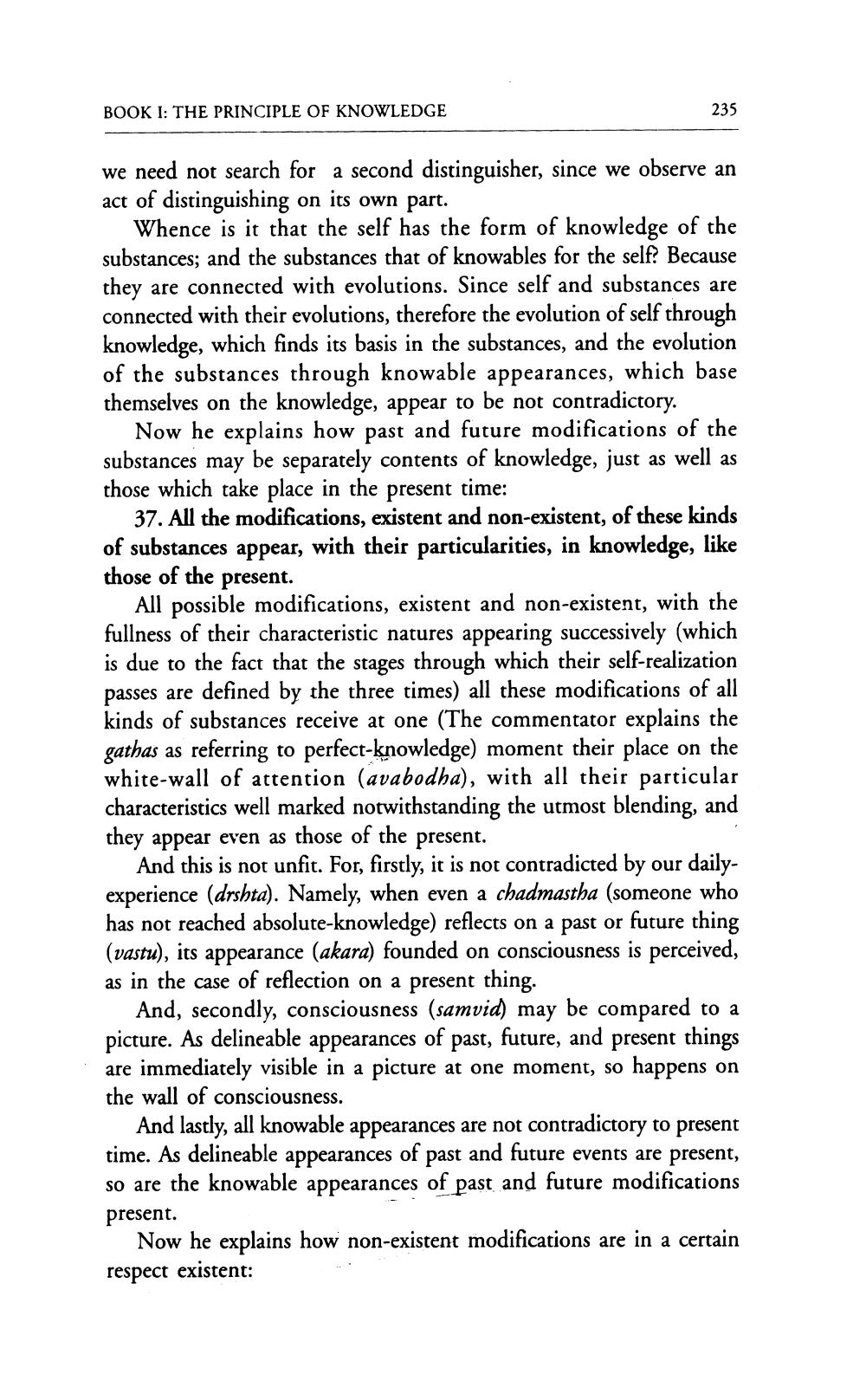________________
BOOK I: THE PRINCIPLE OF KNOWLEDGE
235
we need not search for a second distinguisher, since we observe an act of distinguishing on its own part.
Whence is it that the self has the form of knowledge of the substances; and the substances that of knowables for the self? Because they are connected with evolutions. Since self and substances are connected with their evolutions, therefore the evolution of self through knowledge, which finds its basis in the substances, and the evolution of the substances through knowable appearances, which base themselves on the knowledge, appear to be not contradictory.
Now he explains how past and future modifications of the substances may be separately contents of knowledge, just as well as those which take place in the present time:
37. All the modifications, existent and non-existent, of these kinds of substances appear, with their particularities, in knowledge, like those of the present.
All possible modifications, existent and non-existent, with the fullness of their characteristic natures appearing successively (which is due to the fact that the stages through which their self-realization passes are defined by the three times) all these modifications of all kinds of substances receive at one (The commentator explains the gathas as referring to perfect-knowledge) moment their place on the white-wall of attention (avabodha), with all their particular characteristics well marked notwithstanding the utmost blending, and they appear even as those of the present.
And this is not unfit. For, firstly, it is not contradicted by our dailyexperience (drshta). Namely, when even a chadmastha (someone who has not reached absolute-knowledge) reflects on a past or future thing (vastu), its appearance (akara) founded on consciousness is perceived, as in the case of reflection on a present thing.
And, secondly, consciousness (samvid) may be compared to a picture. As delineable appearances of past, future, and present things are immediately visible in a picture at one moment, so happens on the wall of consciousness.
And lastly, all knowable appearances are not contradictory to present time. As delineable appearances of past and future events are present, so are the knowable appearances of past and future modifications present.
Now he explains how non-existent modifications are in a certain respect existent:




